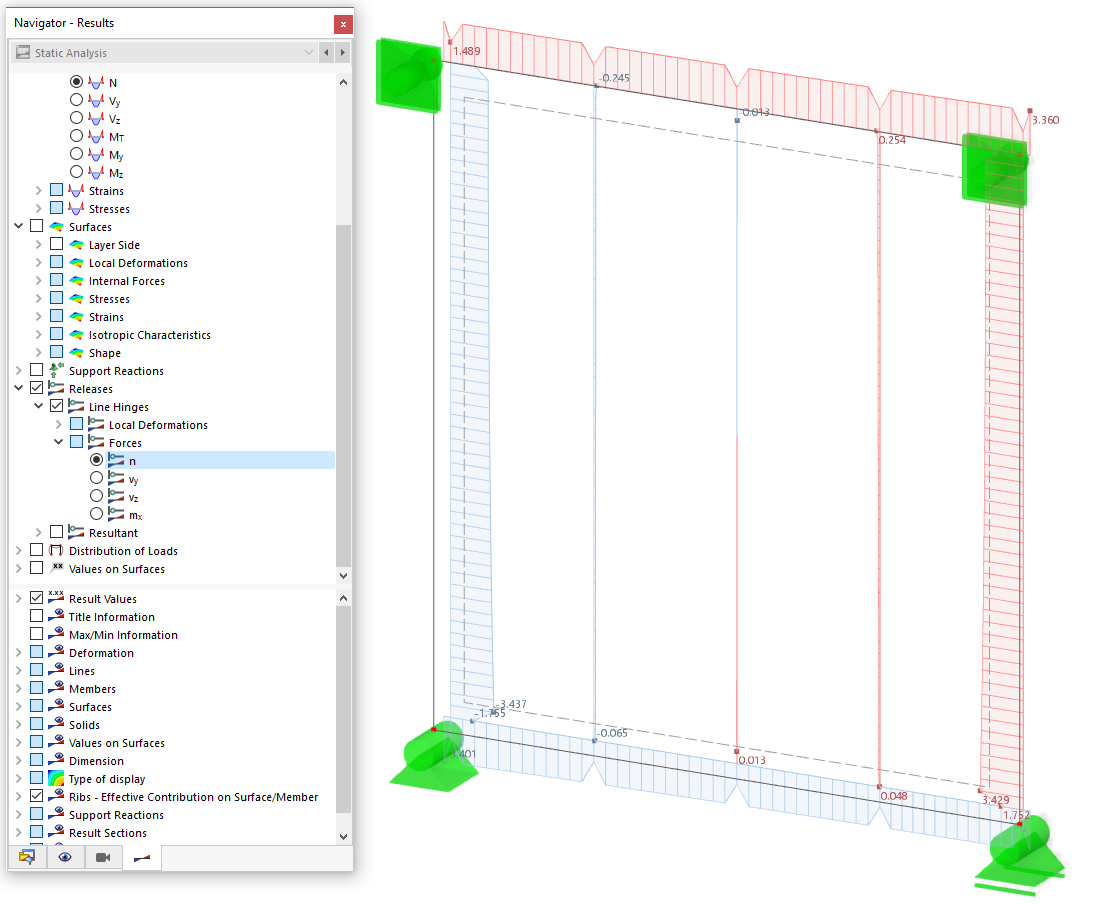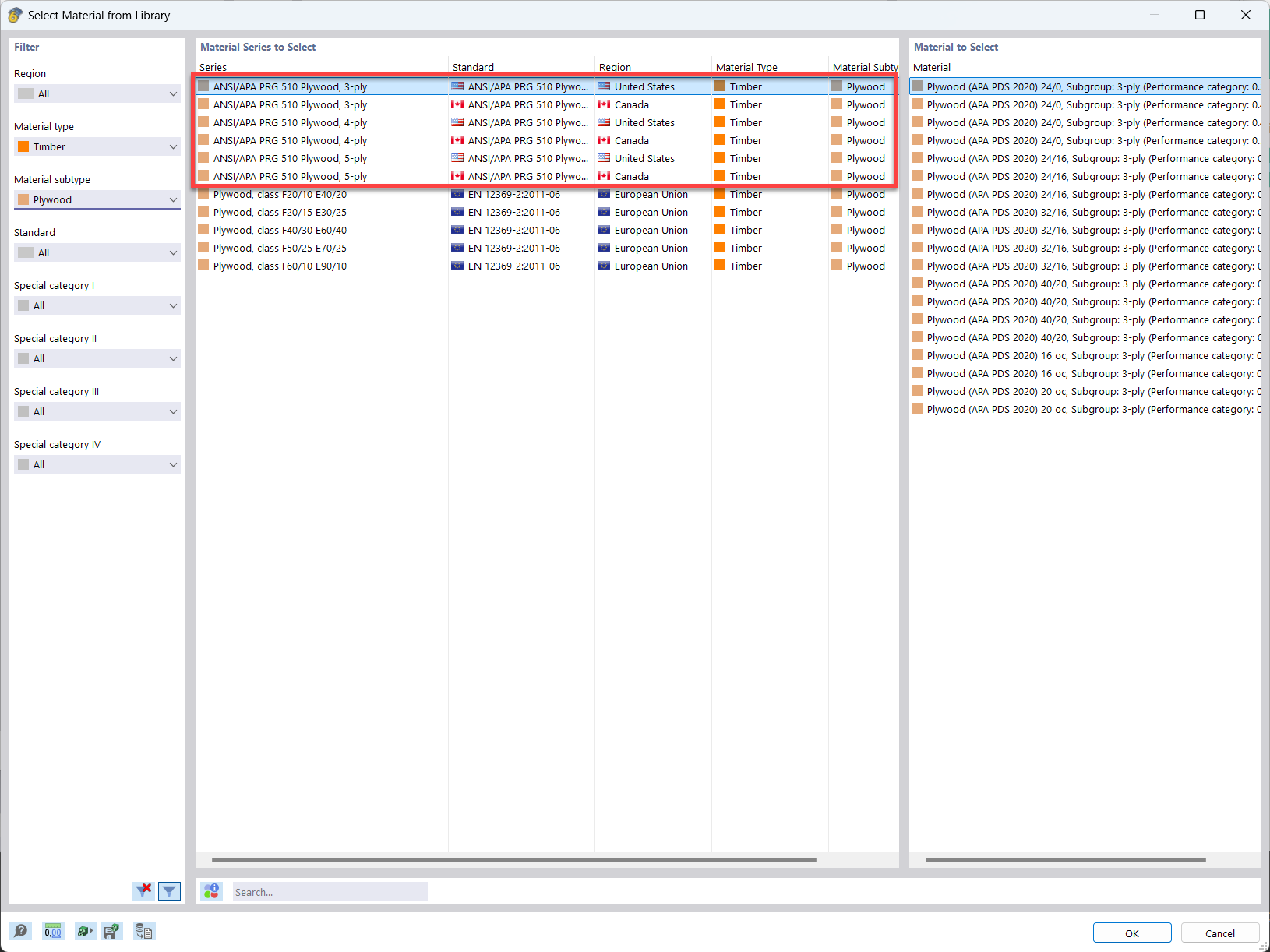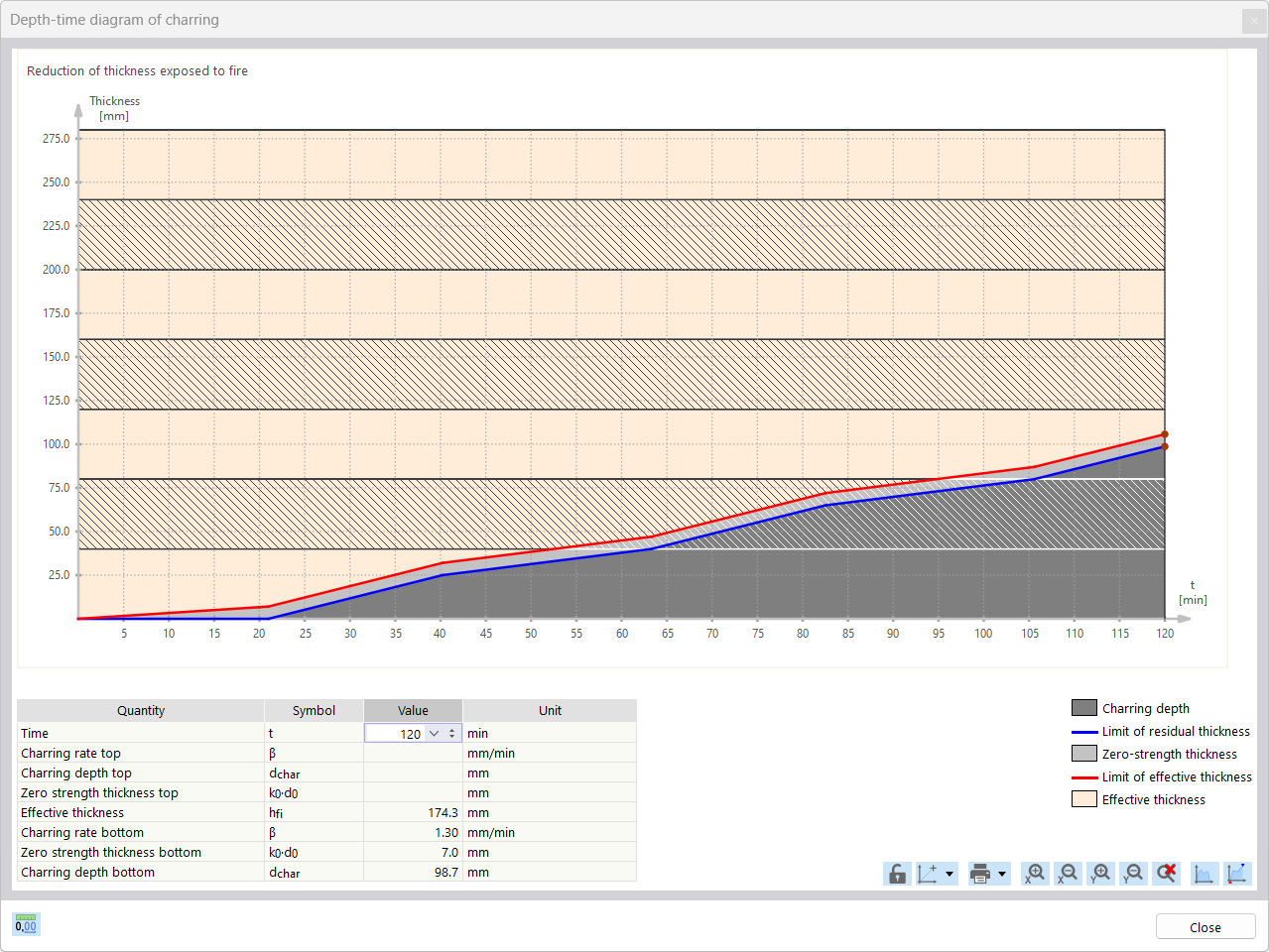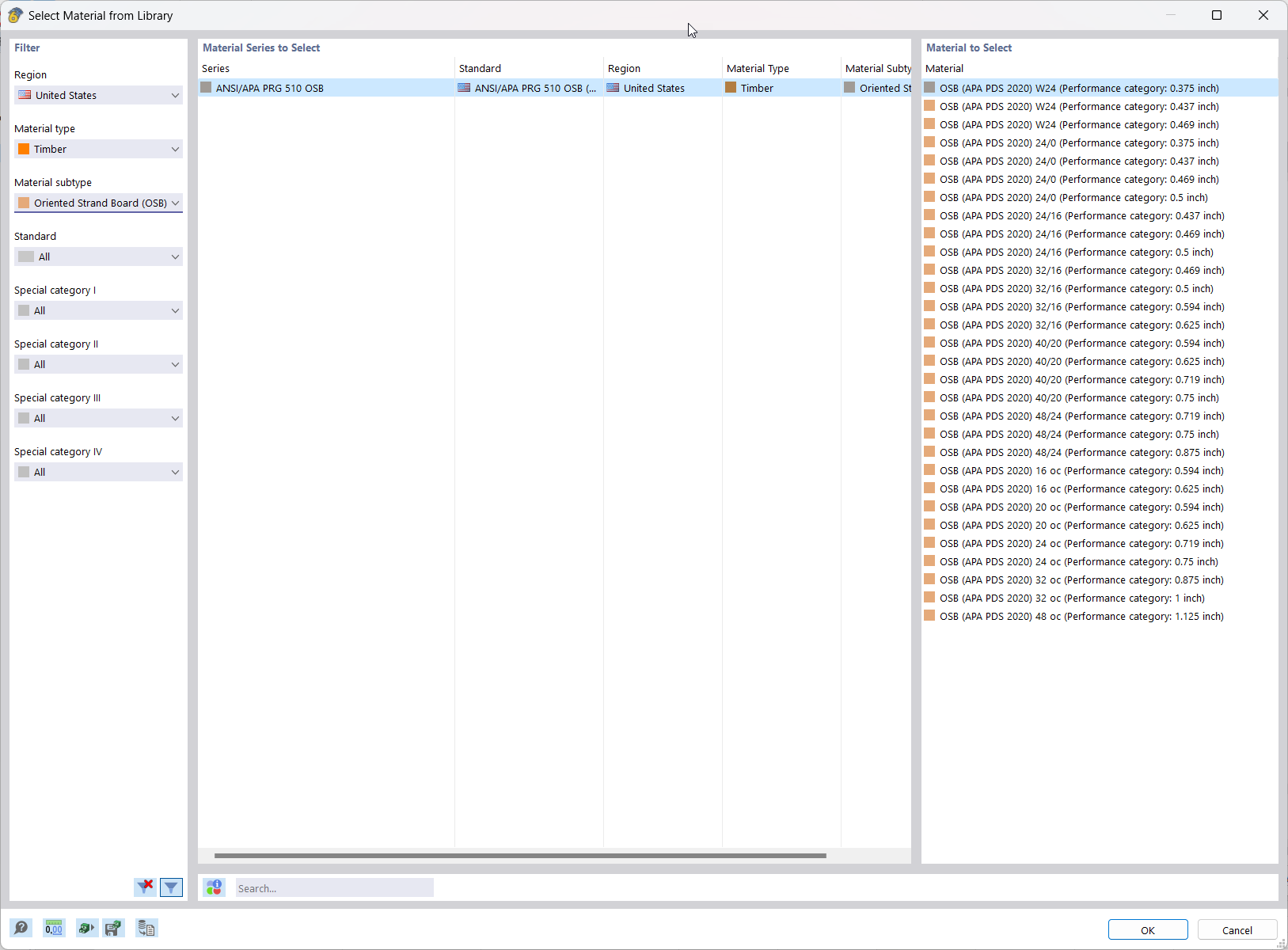|
fe |
Eigenfrequenz |
|
l |
Länge des Trägers |
|
EI |
Biegesteifigkeit des Trägers |
|
m |
Modale Masse |
|
w |
Durchbiegung |
|
l |
Länge des Trägers |
|
m |
Modale Masse |
|
g |
Erdbeschleunigung |
If both equations are equated, the natural frequency of 7.2 Hz results in a deformation of 6 mm.
|
fe,min,DIN |
Mindest-Eigenfrequenz gemäß DIN 1052 |
|
w |
Durchbiegung |
|
g |
Erdbeschleunigung |
If we take into account the fact that in most National Annexes of EC 5, a minimum natural frequency of 8.00 Hz is to be considered, we obtain a maximum deflection of about 5 mm.
|
fe,min,EC5 |
Mindest-Eigenfrequenz gemäß EN 1995-1-1 |
|
w |
Durchbiegung |
If the structural system deviates from a hinged single-span beam (for example, continuous beams, cantilevers, restraints), this must be taken into account accordingly in the deflection limitation.
Example:
We analyze a three‑span beam in a dwelling house. To avoid discomfort caused by persons, the system shall have a minimum fundamental frequency of 8 Hz. In order to consider this in RF‑/TIMBER Pro, you can use the formula for three-span beams (see the PDF document below) to determine the maximum allowed deflection of the central span.
|
wmax,8Hz |
Grenzdurchbiegung um 8 Hz zu erreichen |
|
kf |
Korrekturfaktor (siehe PDF Datei) |
|
l |
Länge des mittleren Feldes |
|
lk |
Länge der äußeren Felder |
|
fe,8Hz |
Mindest-Eigenfrequenz |
In this case, the middle span may deform by -1 mm to comply with the frequency criterion. The actual deflection under permanent load (2.1 kN/m) is obtained as -0.683 mm. Thus, the design of the natural frequency is complied with, and the natural frequency of the beam is greater than 8 Hz. A check calculation results in a natural frequency of 9.76 Hz.
A more precise calculation with the RF‑/DYNAM Pro — Natural Vibrations add-on module results in a natural frequency of 9.86 Hz. The video shows the procedure.
Furthermore, it should be noted that further designs (stiffness criterion, vibration velocity, vibration acceleration) must be performed for the vibration design of apartment ceilings. Notes can be found in [1] or [2], for example.



























.png?mw=512&hash=4a84cbc5b1eacf1afb4217e8e43c5cb50ed8d827)







































